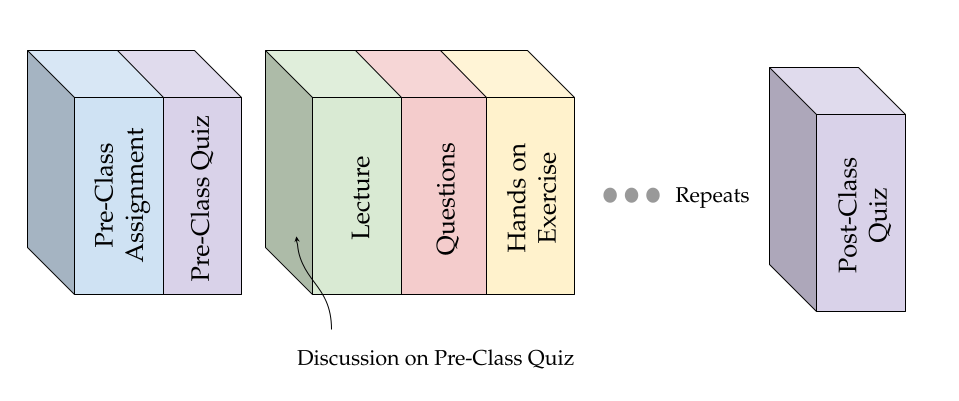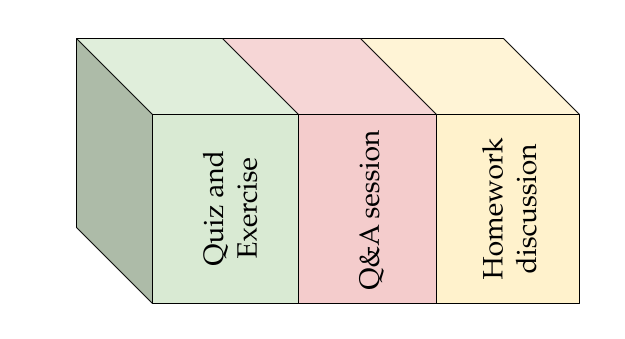Welcome to DS-1 B!
This course covers key concepts in data analysis. You will learn to write SQL queries to manage and analyze data. You will also learn unsupervised learning techniques like clustering to group similar data points together. We will show you how to use dimensionality reduction techniques like PCA and t-SNE to analyze high-dimensional datasets. Finally, you will learn how to interpret analysis results and evaluate model performance.
This page introduces you to the team, the basic instructions, the schedule, and various elements of our class.
The Team
Dr. Ignacio Becker

- Astronomer currently pursuing a Ph.D. in Computer Science at Pontificia Universidad Católica in Chile.
- His main area of research is applied AI to astrophysical problems.
- Nowadays, he focuses on developing models to process the real-time data of the next generation of telescopes.
Teaching Assistants
Click on avatars of the TAs to know more about them.





The Coursework
We have very carefully designed the coursework to give you, the student, a wholesome learning experience. Each week shall include:
- 2 Sessions
- 2 Labs
- Office hours
Session - What to expect

Before the session begins, students are expected to complete a pre-class reading assignment and attempt a quiz based on the same.
A session will have the following pedagogy layout which will be repeated a few times:
- Approx. 10-15 minutes of live online instruction followed by a quiz
- Some sessions will have hands-on coding exercises or group activities
- Sessions will help students develop the intuition for the core concepts, provide the necessary mathematical background, and provide guidance on technical details.
- Sessions will be accompanied by relevant examples to clarify key concepts and techniques.
After the session, students are expected to complete a short post-class quiz based on the principal concepts covered in class and optional post-class reading will be provided.
Lab - What to expect

A lab is a TA driven 1.5 hour session that is divided into 3 major parts.
- Each lab begins by solving parts of a complete problem. This problem is designed to help you further elucidate concepts you learned in lecture.
- After discussing exercises, we will have a semi-formal Q/A session. This part of the lab is free-for-all, where you can ask any doubts that lingered over from lecture.

Course Pre-Requisites
You are expected to have programming experience and basic machine learning concepts such as model fitting, test-validation, regularization, etc.
- Programming Experience:
- Pandas - Specific topics: Introducing Pandas Objects Data, Indexing and Selection
- NumPy - Specific topics: Understanding Data Types in Python, The Basics of NumPy Arrays, Computation on Arrays: Broadcasting, Comparisons, Masks, and Boolean Logic
- Matplotlib - Specific topics: Simple Line Plots, Simple Scatter Plots, Visualizing Errors, Density and Contour Plots, Histograms, Binnings, and Density
- Sklearn API
- Machine Learning Experience:
- Loss functions
- Overfitting and regularization
- Regression and classification
You can also use, MLPrep and PyPrep provided by Univ.AI to learn the topics mentioned above.
In addition to this, you can use the book - Introduction to Statistical Learning to refresh the basic mathematical concepts and Python Data Science Handbook to refresh machine learning concepts.
Note: Prior knowledge of the course content convered in DS-1 A is necessary for this module
Diversity & Inclusion
We actively seek and welcome people of diverse identities, from across the spectrum of disciplines and methods since Artificial Intelligence (AI) increasingly mediates our social, cultural, economic, and political interactions [1].
We believe in creating and maintaining an inclusive learning environment where all members feel safe, respected, and capable of producing their best work.
We commit to an experience for all participants that is free from – Harassment, bullying, and discrimination which includes but is not limited to:
- Offensive comments related to age, race, religion, creed, color, gender (including transgender/gender identity/gender expression), sexual orientation, medical condition, physical or intellectual disability, pregnancy, or medical conditions, national origin or ancestry.
- Intimidation, personal attacks, harassment, unnecessary disruption of talks during any of the learning activities.
Reference:
[1] K. Stathoulopoulos and J. C. Mateos-Garcia, “Gender Diversity in AI Research,” SSRN Electronic Journal, 2019 [Online]. Available: http://dx.doi.org/10.2139/ssrn.3428240.